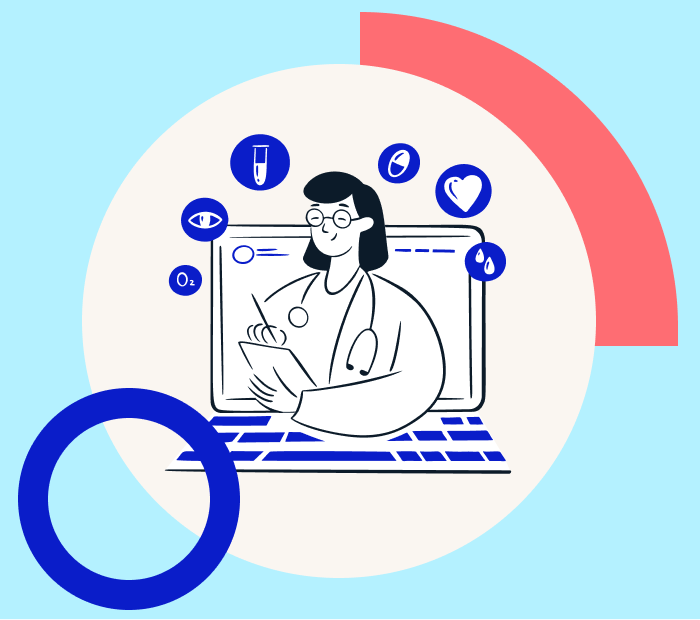What is App Development?
App development is creating software applications specifically designed to run on mobile devices such as tablets, smartphones or other wearable devices. These applications, commonly known as mobile apps, are developed to provide customers with various features and services ranging from entertainment and productivity to communication and utility.

Average Cost of App Development (Benchmarks)
Simple Apps
Basic apps with limited features and straightforward functionality come with a price estimate between $25,000 and $100,000. These apps may include informational or content-based apps, basic utility apps, or simple games. Some examples may have a simple recipe app, to-do lists, countdown timer, or calculator app that is pre-installed on your mobile devices.
Medium Complexity
Apps with moderate complexity, including more features, database integration, Application Programming Interface (API) connections, and customised UI/UX design, usually range between $100,000 and $250,000. Examples include social networking apps (Meta, Youtube, Spotify), e-commerce (Amazon, E-bay), productivity (Slack, Dropbox), and booking/reservation apps (Agoda, Klook).
Complex Apps
Highly complex app development involves advanced functionalities, real-time data synchronisation, third-party integrations, complex backend systems, and intricate UI/UX designs that can cost above $250,000. These apps often include on-demand services, custom enterprise solutions, augmented reality (AR) or virtual reality (VR), and sophisticated gaming apps. Some examples of complex app types are Uber, Robinhood, Clash of Clans, and PokemonGo.
Factors Affecting the Cost of Developing an App
Several factors can influence the cost of developing a mobile app project. Here are major factors to look out for:
Platform
An app’s development cost is affected by the platform it’s built on. The leading platforms are iOS and Android, which have different coding languages, software development kits (SDK) and design guidelines. This means you may need to create multiple versions of the app project for both platforms, which increases costs.
Design and Complexity
The design of an app can impact the cost of development, mainly if you want features like animations, gestures or custom UI. More complex functionalities and features (like live streaming or data visualisation) require higher proficiency and expertise from the app development team, which can lead to additional costs.
Number of Features
Development costs depend on the number of features an app has. More features equal higher app costs. Therefore, it’s crucial to decide which app features are necessary and which ones are not when planning an app.
Integration With Third-Party Systems
Apps that integrate with external systems, like payment portals or social media networks, require additional integrations that can drive up the development cost.
Timeframe
The timeframe in which an app is developed can also affect development costs. If you need an app created quickly, you may need to pay more for faster development services. Conversely, spreading out the development timeline can lower costs but will stretch out the project timeline.
Cost Breakdown: Understanding App Development Stages
Developing an app is a multi-stage process that requires time, patience, and investment. There are multiple approaches to development, and understanding the stages involved and associated costs is essential for proper budgeting and project planning.
Discovery Stage
In the discovery stage, a developer team talks with the client to set app goals, find the target users and decide what features are needed. The cost of this stage may vary based on the project’s complexity and the number of team members.
Design Stage
After determining the app’s goals and characteristics, the team moves on to the mobile app design stage. Here, they create the app’s layout, interface, and awesome user experience. How much this stage cost depends on how complicated the design is and how knowledgeable the design team is.
Development Stage
After finalising the design, developers start coding the app’s functionality. This stage involves integrating APIs and developing any app-specific features. The cost depends on the app’s complexity and the development team size.
Testing Stage
App testing is done to check for bugs and glitches. It is a time-consuming process that ensures it runs smoothly on different devices and platforms. The cost of testing depends on the time and resources needed.
Deployment Stage
The final step of launching an app is deployment. This involves presenting the app to the suitable app store and using a distribution certificate to publish it on the live platform. The cost of deployment is usually a one-time fee, but it may differ based on the platform, as Apple is known to have increased barriers to entry, therefore may be rejected and amended until it complies with the platform guidelines
Hidden App Development Costs
If you’re considering developing an app for your business or a personal project, it’s important to be aware of the potential hidden costs that can arise during the process.
Research and Planning
To ensure your app meets your target audience’s needs and aligns with your business goals, you need to research and plan. This includes market research, competitor analysis, user testing, and creating a project plan. These costs are important for your app’s success and should not be overlooked.
App Design
Good design is essential for your target audience. This means making a UI that’s easy to use and enjoyable. Design a type of app with scalability to avoid extra costs.
App Development
Mobile application development is the most time-consuming and expensive phase of the process. The cost of an app depends on its complexity, features, and scalable technologies used. Developers charge hourly rates or fixed project rates, which can quickly increase if unexpected issues arise during development.
App Deployment
Apps that do not follow platform guidelines can be rejected from the App Store (iOS) or Play Store (Android) and require iterations for it to be approved. Therefore, these numerous iterations can add up and present an unexpected additional cost.
Testing and Basic Maintenance Cost
After completing the app, testing it on different devices and operating systems is crucial to ensure it works properly. Ongoing maintenance expenses should be factored in for updating and fixing any bugs that may arise with new operating system versions.
App Marketing and Distribution
Digital marketing and distribution costs can include app store fees, paid advertising, content creation, graphic design, video production, and social media management. These costs can quickly amount to a significant investment but are crucial for getting your app in front of your target audience.
Hiring Australian App Developers: Things to Consider
When considering hiring Australian app developers or outsourcing development offshore, there are several factors to keep in mind. Here are some key aspects to consider:
- Evaluate expertise, experience and portfolio
- Assess cultural compatibility and language proficiency
- Consider time zone differences and availability
- Factor in cost and budget constraints
- Understand intellectual property and legal aspects
- Leverage local market knowledge if targeting Australian market
- Evaluate project management and communication capabilities
- Inquire about post-development support and maintenance
- Seek references or recommendations from previous clients.
Build an Exceptional App With Butterfly
Butterfly delivers top-notch app development services tailored to your unique needs. We use modern technologies and best practices to create viable app ideas that meet your requirements and exceed expectations—Trust Butterfly as your Australian app developer. Contact us today, and let’s start transforming your app idea into a reality!

